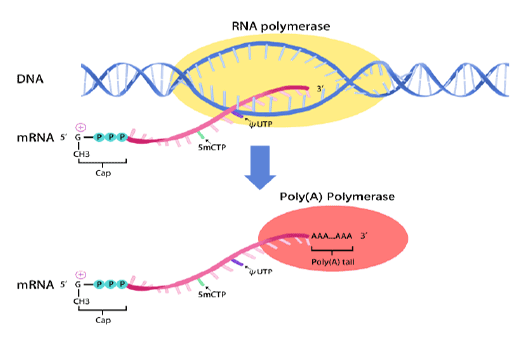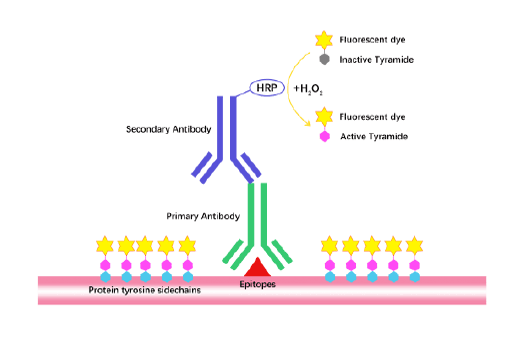L-Homopropargyl Glycine
L-homopropargylglycine (Hpg), an alkyne-tagged analog of methionine, has been used to selectively tag newly synthesized mammalian proteins in a method similar to conventional pulse-chase labeling, and labeled proteins were visualized via fluorescence. Protein translation has been implicated in different forms of synaptic plasticity, but direct in situ visualization of new proteins is limited to one or two proteins at a time. Homopropargylglycine is a noncanonical amino acid which can incorporate into proteins followed by chemoselective fluorescence tagging by means of 'click chemistry'. Pulse-chase application of homopropargylglycine allowed visualization of proteins synthesized in two sequential time periods. This technique can be used to detect changes in protein synthesis and to evaluate the fate of proteins synthesized in different cellular compartments [1].
Reference:
[1] Dieterich D C, Hodas J J L, Gouzer G, et al. In situ visualization and dynamics of newly synthesized proteins in rat hippocampal neurons[J]. Nature neuroscience, 2010, 13(7): 897-905.
- 1. Yaqiong Li, Zhipeng Niu, et al. "Rapid metabolic reprogramming mediated by the AMP-activated protein kinase during the lytic cycle of Toxoplasma gondii." Nature Communications. 26 January 2023
- 2. Xuke Yang, Xiaoyan Yin, et al. "Essential role of pyrophosphate homeostasis mediated by the pyrophosphate-dependent phosphofructokinase inToxoplasma gondii." PLoS Pathog. 2022 Feb 1;18(2):e1010293. PMID: 35104280
| Physical Appearance | A crystalline solid |
| Storage | Store at -20°C |
| M.Wt | 127.1 |
| Cas No. | 98891-36-2 |
| Formula | C6H9NO2 |
| Synonyms | Click Tag™ L-Homopropargyl Glycine,HPG |
| Solubility | ≥2.72 mg/mL in DMSO with ultrasonic; insoluble in EtOH; ≥13.8 mg/mL in H2O |
| Chemical Name | (2S)-2-amino-5-hexynoic acid |
| SDF | Download SDF |
| Canonical SMILES | C#CCC[C@H](N)C(O)=O |
| Shipping Condition | Small Molecules with Blue Ice, Modified Nucleotides with Dry Ice. |
| General tips | We do not recommend long-term storage for the solution, please use it up soon. |
Quality Control & MSDS
- View current batch:
-
Purity = 98.00%
- COA (Certificate Of Analysis)
- MSDS (Material Safety Data Sheet)
- Datasheet
Chemical structure








